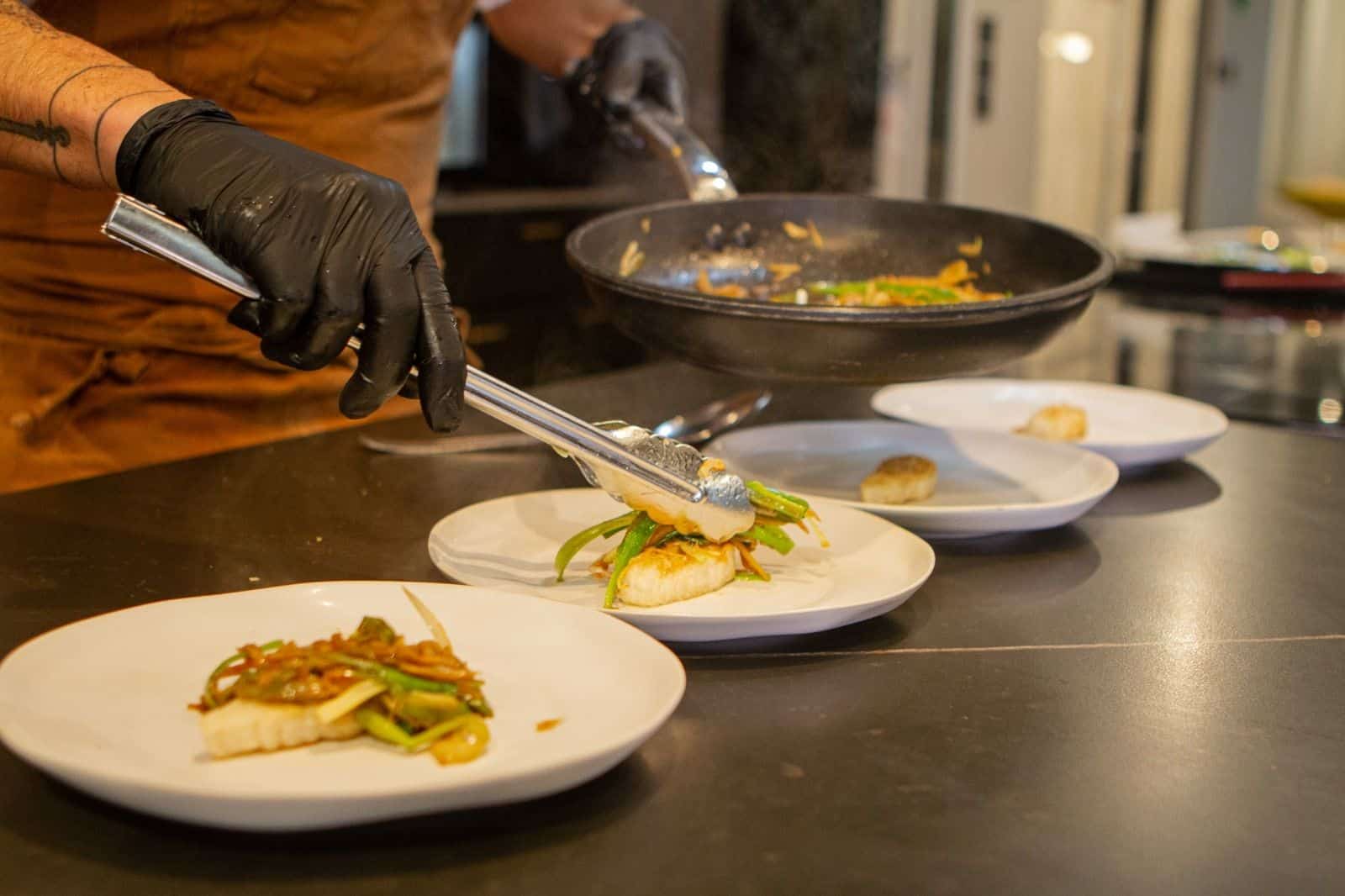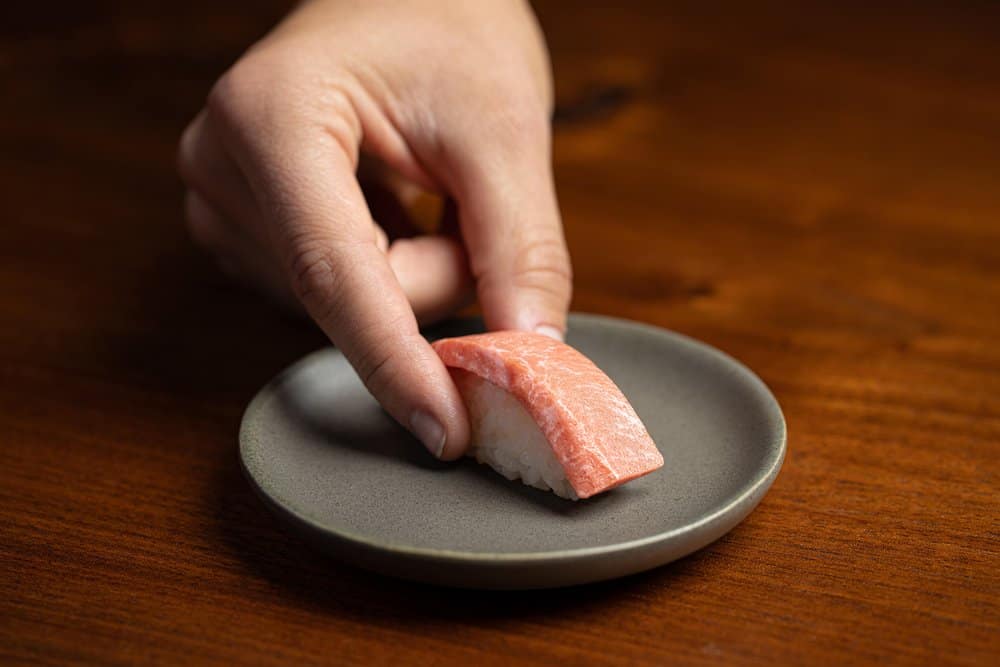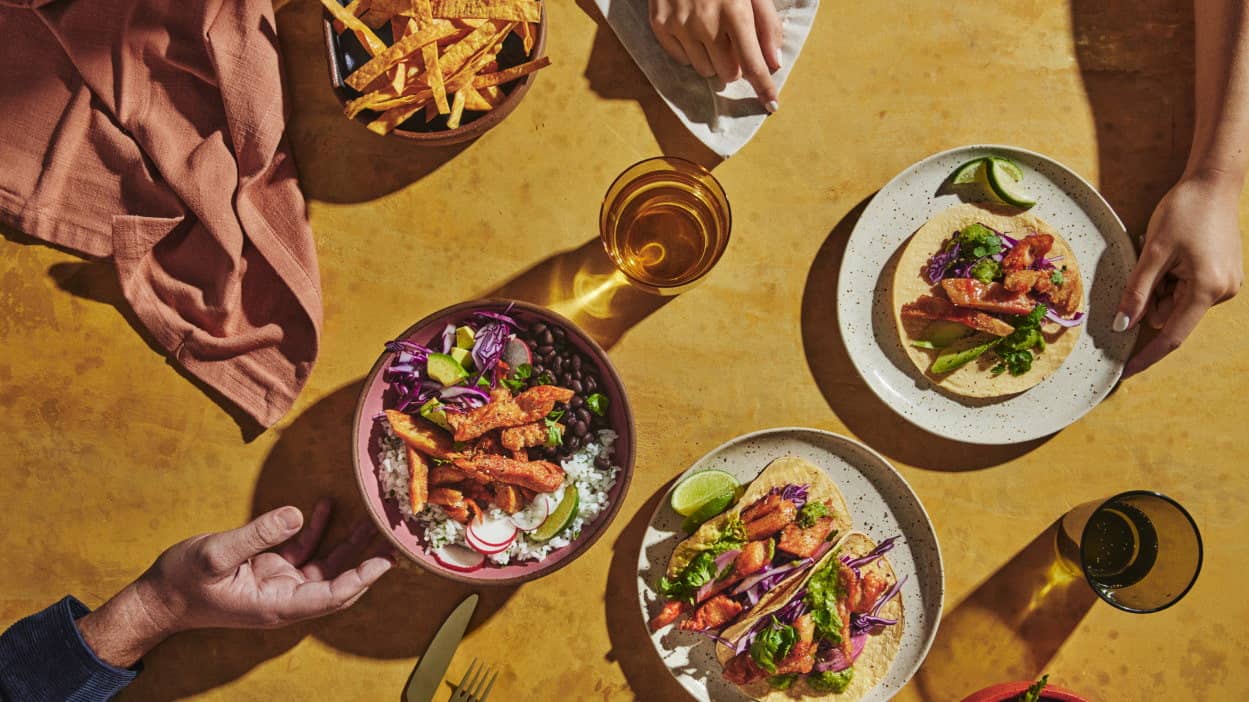New technologies to achieve structure and texture in cultivated meat include 3D bioprinting; an additive manufacturing process using a printer and bioinks.
Any meat (chicken, fish, beef) can be printed layer-by-layer into ground meat, sausages, or whole cuts. This allows for a consistent, high-quality product tailored to desired specifications, such as fat ratio, nutritional profile, taste, and texture.
Unlike 3D printing, bioprinters utilize cells and biomaterials to construct organ-like structures that enable living cells to replicate. Cultivated meat companies constantly face the challenge of developing optimal bioink formulations suitable for an efficient and scalable cultivation process. We take a look at some of the biotechs leveraging 3D technologies to make their products.

© Eat Just
1. GOOD Meat
GOOD Meat, a subsidiary of Eat Just, was the first company to receive approval to sell its cultivated chicken in Singapore, the first country in the world to approve such a novel food. GOOD Meat’s cultivated chicken is available at select restaurants and Huber’s Butchery in the city-state, where the biotech has a pilot plant.
In a historical milestone this March, GOOD Meat received regulatory approval from the US Food and Drug Administration(FDA) as part of the agency’s pre-market review process. It’s the first biotech to receive regulatory approval on multiple continents.
GOOD Meat says its platform involves growing stem cells from chicken eggs that are then cultivated into edible tissue. This tissue is converted into a bioink and 3D printed into “normal” looking food, offering a chicken-like product that tastes just like meat.

2. Steakholder Foods
At the forefront of bioprinting, Steakholder Foods, formerly MeaTech 3D (NASDAQ: MITC), has developed an advanced and proprietary process that uses cell lines from tissue samples to formulate bioinks to print steaks of fish fillets with its 3D printing tech. Once printed, the products enter an incubator to mature and grow into the company’s cultivated meat.
Using its bioprinting platform, Steakholder Foods revealed the world’s largest-ever 3D-printed cultivated steak in 2021. The company, which also aims to produce seafood, partnered with the Singaporean cultivated seafood expert Umami Meats to develop 3D-printed structured eel and grouper. Together they successfully created the world’s first 3D-printed cultivated fish fillet showcasing it at a tasting in Israel.

3. BlueNalu
BlueNalu is a cell-based fish company based in San Diego, California. It is developing a technology platform to cultivate fresh-water and salt-water fish species through “cellular aquaculture,” which involves synthesizing muscle cells, connective tissue, and fat cells. BlueNalu incorporates 3D bioprinting and extrusion to form the structure and texture of its cultivated fish expeditely and optimize the process.
The company has a 38,000 sq foot pilot facility with bioreactors ranging from 10 to 2,000 liters in size. It aims to build 150,000 sq/ft manufacturing facilities in cities worldwide to supply fish alternatives to millions of people. The biotech is targeting a 2023 commercialization of its products.

4. BELIEVER Meats
BELIEVER Meats, previously Future Meat Technologies, hopes to commercialize “delicious” cultivated meat in Israel and the US in the next years. The biotech, which also uses 3D bioprinting, leverages the experience of its founder and CTO, Professor Yaakov Nahmias, the first researcher to 3D print cells for the first commercial human-on-chip technology.
BELIEVER Meats aims to transform global meat production into an animal-free reality through the distributive manufacturing of fat and muscle cells (the core building blocks of meat).
Following the opening of its first industrial cultured meat production facility in Rehovot, Israel, in June 2021, the biotech is also constructing the world’s largest cultivated meat facility in North Caroline, USA.
According to the company, the small-scale production costs per pound of chicken and beef were $150 and $200, respectively. However, after several scientific breakthroughs, it has put down the production cost to less than $10 per pound, said the company in 2022.

5. Aleph Farms
Aleph Farms, founded in 2017 and headquartered in Rehovot, has made significant strides in the slaughter-free meat industry. With over $131 million in funding from investors such as Leonardo DiCaprio, the company launched the world’s first slaughter-free steak.
Aleph Farms has developed a 3D bioprinting platform to assemble a structured steak piece. It uses non-animal-derived materials from the plant kingdom — a vascular-like system for producing bioinks and pea protein scaffolds — to create a ribeye steak similar to a conventional steak. Controlling the ratio of fat cells used in the bioink determines the level of marbling in the steak, explains Aleph Farms.
This technological advantage and other scientific breakthroughs, including a media growth supply chain and cheaper animal-free serum, lift the barriers to producing cultivated meat at scale.
“Our bio-ink led to a consistent distribution of the cells on the bioprinted scaffold, promoting the growth of the cells on top of it. Since we didn’t use any animal-derived biomaterials, our findings promise greater development of the cultivated meat market moving forward,” said Prof. Levenberg from the biomedical engineering faculty at the Technion that collaborated with Alpeh Farms to develop bioinks.





